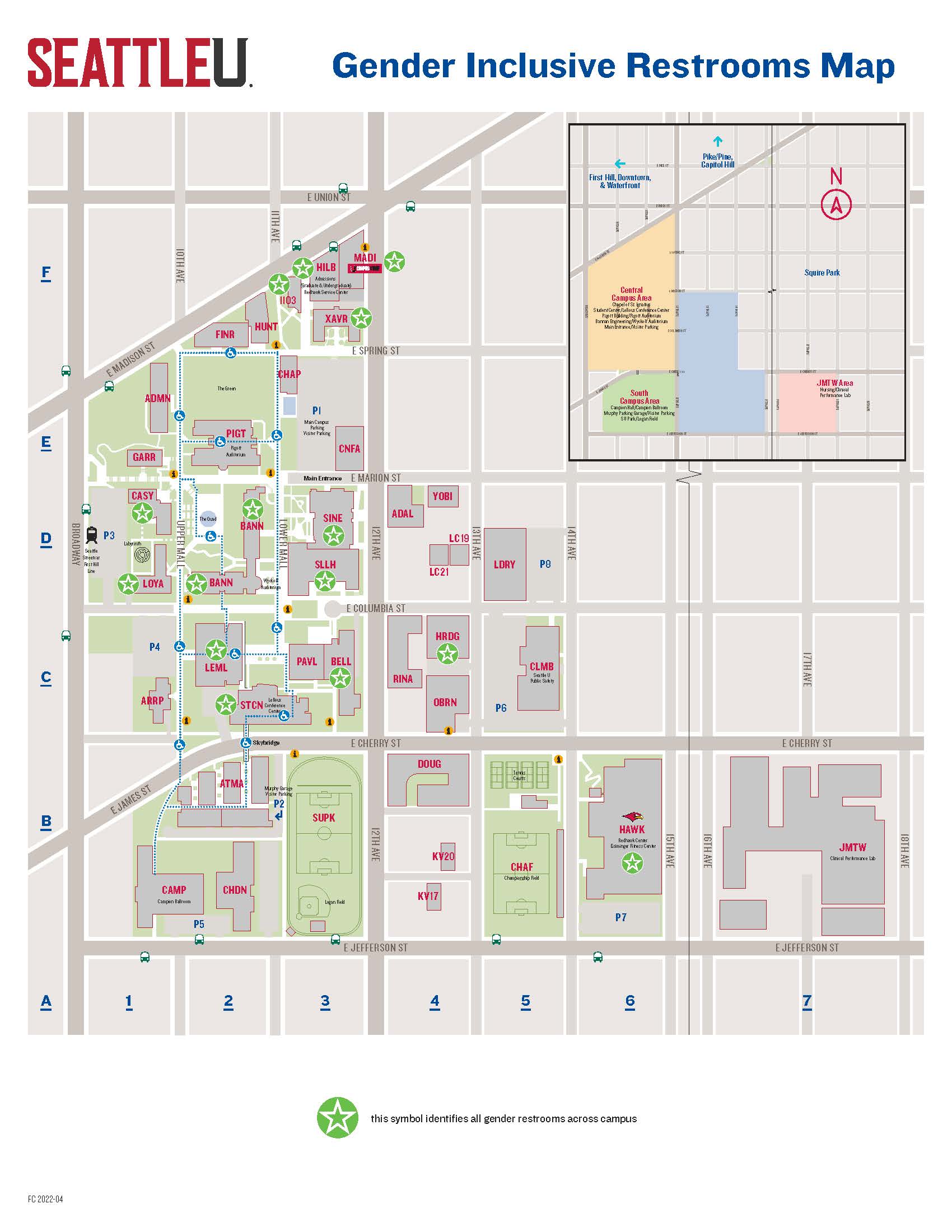
Gender Inclusive Restrooms
Gender inclusive restrooms are one way that Seattle University works to respect the dignity of each person by providing inclusive and safe space for trans and gender nonconforming students, faculty, staff and community members.
What is a gender inclusive restroom?
A gender inclusive restroom, sometimes called a gender neutral restroom, or a single use restroom is a restroom that anyone of any gender can use. These restrooms can benefit many different people, including parents with differently gendered children, people with disabilities who may require the accompaniment of an attendant of a different gender, and trans and gender non-conforming people. At Seattle University, each of the gender inclusive restrooms are single use. Restrooms are lockable rooms with a toilet and sink, for use by one individual at a time.
Gender inclusive restrooms are one way that Seattle University works to respect the dignity of each person by providing inclusive and safe space for trans and gender non-conforming students, faculty, staff and community members. If you have any questions about gender inclusive restrooms at Seattle University, please contact mosaic@seattleu.edu.
Locations:
Please click here for a downloadable PDF of our campus map: Gender Inclusive Restroom Map
Future of gender inclusive restrooms at Seattle University:
All new construction at Seattle University incorporates the inclusion of gender inclusive restrooms, in addition to restrooms designated for male and female users. As funds and zoning permits, more existing restrooms will be converted to gender inclusive restrooms to increase availability and access.
The history of gender inclusive restroom at Seattle University:
In 2012 the inter-divisional Committee to Improve Trans Inclusion (CITI) was mandated with continuing to research and implement changes to improve the University’s inclusion of trans and gender non-conforming students, faculty and staff. There were four areas in the initial work of CITI: facilities (including gender inclusive restroom conversion and construction), forms that individuals at the University use to describe gender, administrative processes and data systems and education outreach to faculty, staff, and students regarding trans and gender non-conforming issues.
